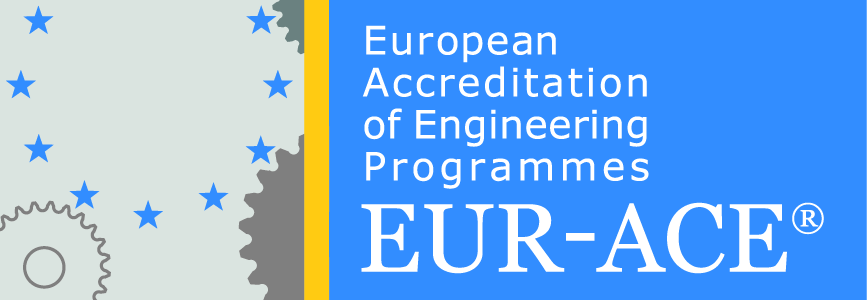| 1. | Course Title | Wireless Technologies and Networks for Internet of Things | |||||||||||||
| 2. | Code | 4ФЕИТ07003A | |||||||||||||
| 3. | Study program | Dedicated Embedded Computer Systems and Internet of Things | |||||||||||||
| 4. | Organizer of the study program (unit, institute, department) | Faculty of Electrical Engineering and Information Technologies, Ss. Cyril and Methodius University in Skopje | |||||||||||||
| 5. | Degree (first, second, third cycle) | Second cycle | |||||||||||||
| 6. | Academic year/semester | Year | I | Semester | 1 | ||||||||||
| 7. | Workload measured by number of ECTS credits | 6 | |||||||||||||
| 8. | Lecturer (in case of several lecturers to note the responsible one) | Dr Daniel Denkovski | |||||||||||||
| 9. | Language of teaching | Macedonian and English | |||||||||||||
| 10. | Course prerequisites | None | |||||||||||||
| 11. | Course goals (acquired competencies) and study results:
Knowledge and understanding of advanced concepts and technologies related to sensors, wireless communication, and mobile networks within the scope of Internet of Things (IoT). Capability to discern and choose the most fitting technology and design wireless networks tailored for diverse IoT applications across various purposes. |
||||||||||||||
| 12. | Course syllabus (with chapters) and study results for each chapter:
Chapter 1: Overview of standardized and proprietary wireless networking solutions for IoT. Chapter 2: Short-range narrowband wireless sensor networks (ZigBee, Z-Wave, Bluetooth, BLE) and wideband options (UWB, WiGig), along with the RFID and NFC technologies. Chapter 3: Broadband LAN networks (Wi-Fi 3rd to 6th gen) with medium range and high data rates. Chapter 4: Latest cellular networking standards (4G, 5G) emphasizing the LTE-M, NB-IoT, URLLC, and mMTC technologies. Chapter 5: Other standardized (MyThings) and proprietary solutions (LoRa, Sigfox) for IoT networking. Chapter 6: Qualitative and quantitative comparison of wireless technologies, evaluating performance (throughput, delay) and energy efficiency. Chapter 7: Applicability of wireless solutions in various IoT applications (smart homes, cities, industrial automation, agriculture, healthcare). |
||||||||||||||
| 13. | Interconnection of Courses: The course is intrinsically connected to the courses Internet of Things and Dedicated and contemporary computer networks, thus forming the basis for the networking elements of the dedicated systems. Additionally, this course is supplementing other advanced courses in the Program, like:
Security and reliability of computer communication systems, IoT Standards and Protocols, Coding Theory, Secure Communications and Blockchain Technologies, Cloud computing and Cloud platforms, giving the basic knowledge regarding wireless communications and its application in the Internet of Things. |
||||||||||||||
| 14. | Detailed description of teaching and work methods:
Lectures, individual engagement in project tasks, and the preparation of seminar work. A compulsory project assignment for each student, with the final grade determined based on the total points from both, the project assignment and the final exam. |
||||||||||||||
| 15. | Total number of course hours | 180 | |||||||||||||
| 16.
|
Forms of teaching | 16.1 | Lectures-theoretical teaching | 45 hours | |||||||||||
| 16.2 | Exercises (laboratory, practice classes), seminars, teamwork | 45 hours | |||||||||||||
| 16.3 | Practical work (hours): | 15 hours | |||||||||||||
| 17.
|
Other courseactivities | 17.1 | Projects, seminar papers | 30 hours | |||||||||||
| 17.2 | Individual tasks | 30 hours | |||||||||||||
| 17.3 | Homework and self-learning | 15 hours | |||||||||||||
| 18. | Conditions for acquiring teacher’s signature and for taking final exam:
Regular attendance on lectures and consultations. |
||||||||||||||
| 19. | Grading | ||||||||||||||
| 19.1 | Quizzes | 0 points | |||||||||||||
| 19.2 | Seminar work/project (presentation: written and oral) | 50 points | |||||||||||||
| 19.3 | Final exam | 50 points | |||||||||||||
| 20. | Grading criteria (points) | up to 50 points | 5 (five) (F) | ||||||||||||
| from 51 to 60 points | 6 (six) (E) | ||||||||||||||
| from 61 to 70 points | 7 (seven) (D) | ||||||||||||||
| from 71 to 80 points | 8 (eight) (C) | ||||||||||||||
| from 81 to 90 points | 9 (nine) (B) | ||||||||||||||
| from 91 to 100 points | 10 (ten) (A) | ||||||||||||||
| 21. | Method of monitoring of teaching quality | Self-evaluation and student surveys | |||||||||||||
| 22. | Literature | ||||||||||||||
| 22.1. | Required Literature | ||||||||||||||
| No. | Author | Title | Publisher | Year | |||||||||||
| 1. | D Chew | The Wireless Internet of Things: A Guide to the Lower Layers | Wiley | 2018 | |||||||||||
| 2. | NH Mahmood, N Marchenko, M Gidlund, and P Popovski | Wireless Networks and Industrial IoT: Applications, Challenges and Enablers | Springer | 2021 | |||||||||||



